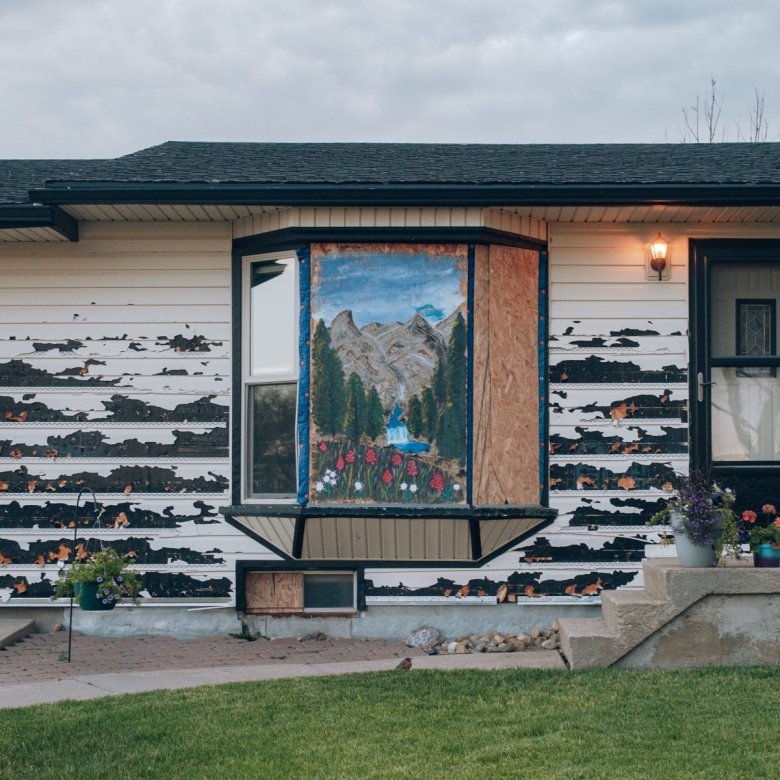Coloradans facing 50% to 100% price hikes for home and car insurance — or cancellation altogether — as climate disasters mount may find relief in a state last-chance fund, but terms may be so onerous they won’t use it, a Colorado Sun expert panel warns.
Prices could be so high for the so-called “insurance of last resort,” mandated by a 2023 state law, that Colorado homeowners may need it but won’t actually want it when they see the details, said Carole Walker, chief of the regional insurance trade group Rocky Mountain Insurance Information Association.
“We don’t think that this is hopeless. We think there are real solutions,” Walker said, as part of the Sun panel “Climate Change Hits Home,” premiering at 6 p.m. Tuesday with free signup available here.
“The problem is there’s just not a silver bullet. These have to be multipronged solutions, from mitigation, reducing the overall risk and then looking at how we can keep private insurance in the marketplace,” Walker said. “I think that we’re trying to get there.”
The Colorado high-risk property insurance pool, scheduled to launch Jan. 1, will need to charge high rates to consumers and cap damage awards at $750,000 per home to stay solvent, Walker said. “The goal of the insurance industry, for those customers, is to be a niche in the market, not a panacea in the market. So we can help bring the state back, be one element of the solution, not become part of the problem. That’s a big pill to swallow, I know, for insurance consumers who are just looking, I would like this to be a better option. Unfortunately, it needs to be actuarially sound.”
Walker, joined on the panel by Colorado Insurance Commissioner Michael Conway and Doug Heller, director of insurance for the nonprofit Consumer Federation of America, agreed that home and auto insurance costs have risen sharply throughout the state in the past couple of years. And more homeowners in wildfire-prone areas are being told they can’t be insured at all.
“And that’s a reflection of climate change” and the increased frequency of severe drought and weather that results, Conway said. “That’s a reflection of the fact we’re a state that has really two catastrophes that hit us. We have hail and we have wildfires. And I think folks don’t realize how big an impact hail has on our state.”
Colorado’s hail damage costs are second only to far more heavily populated Texas, Conway noted.
“And it’s not the case anymore that the hail season is over once we get to June or July. The hail season really does persist throughout the summer, and it’s similar with wildfire,” Conway said. The result is that Colorado property insurers as a group have lost money in eight of the past 11 years, he added — insurers must be able to write premiums high enough to pay claims and stay solvent.

Colorado was second only to Kansas for the increase in catastrophic weather events over the past 10 years, at 275%, Walker said. Meanwhile, insurers must pay the same high inflation costs as consumers for claims that include labor, lumber, glass and other goods, Walker said. California waited too long to take on meaningful insurance reforms that would have kept more insurance companies writing policies in more areas of the state, she said.
“We don’t want to end up where California is right now,” Walker said.
Heller, based in California, agreed, but added that regulators and politicians must be vigilant, not just cooperative, with insurance companies whose charges are scaring off vulnerable consumers.
Consumer Federation research “shows that about 6 million American homes are uninsured, representing something around $1.6 trillion of market value,” Heller said. Banks holding a mortgage require insurance to protect the asset. Homeowners without insurance would often have no ability to replace or rebuild a damaged home, Heller said.
“That’s extremely concerning, and that data is from 2021. Our expectation is that when the 2023 data come out later this year, we’re going to see even more uninsured homes,” he said.
Heller agrees climate change has increased costly weather events, but has a different conclusion.
“It’s not new, and in fact, the insurance industry and regulators have been asked for decades now to pay more attention to the impact of climate change on insurability, on the property insurance markets, how it’s going to affect our homes. And for years, unfortunately, and too many regulators had their head in the sand and allowed things to just kind of go on as usual,” Heller said.

“So when somebody in Jefferson County suddenly hears that they’re being nonrenewed, they ask themselves, ‘Wait a second: Last year, the insurance company didn’t say there was any problem. They took my premium, as they did the year before and for decades before that.’ Climate change didn’t happen just in 2023,” Heller said.
Insurance companies want a thoughtful and financially viable transition to the states’ new high-risk pools, Heller said, while consumers getting canceled aren’t being offered the same consideration.
“I just wish that we were thinking a little bit about how do we transition into this, rather than, how do we make consumers bear this pain immediately,” Heller said.
Hear more from the panel about Colorado’s precarious state of property insurance, and how a carefully selected board is designing the high risk pool, at Colorado Sun’s “Climate Change Hits Home” event.

